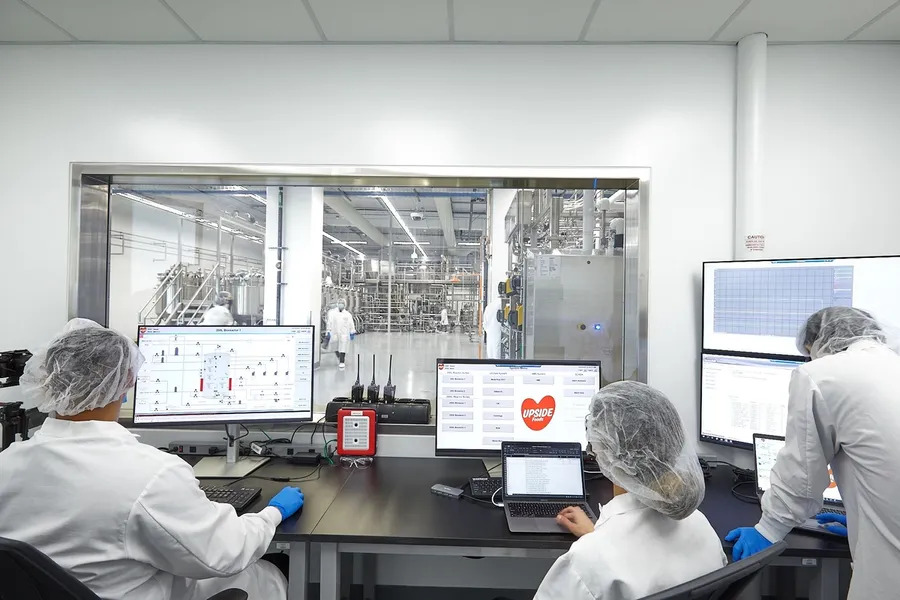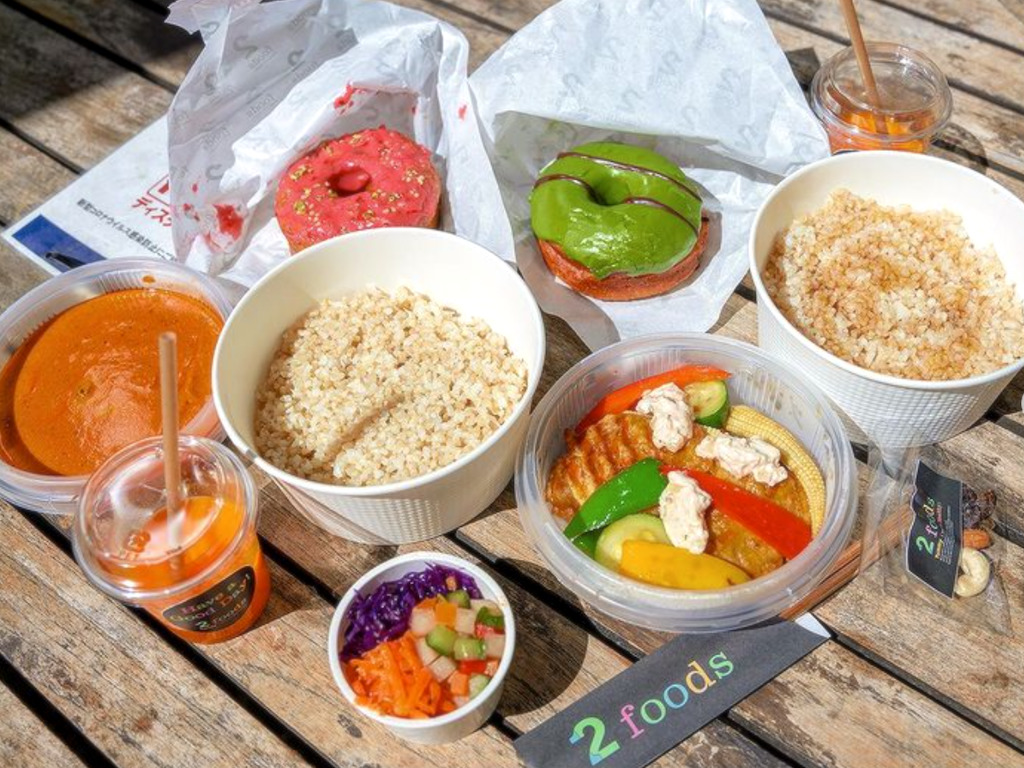FORWARD FOODING
THE BLOG
Cellular Agriculture – Where are we heading to?

Cellular agriculture, also known as “cell-based” or “lab-grown” foods for the development of animal-based protein, is an emerging technology that has the potential to revolutionize the way we produce and consume food, especially when it comes to meat, dairy, and fish. It offers undeniable benefits for the environment and the planet by allowing the production of these products without killing or exploiting animals. However, it faces technical complex scalability challenges which cellular agriculture companies seem to be looking to solve by joining forces when it comes to building a robust supply chain.
Let’s take a deeper look at the notable developments in this space.
A short deepdive into the science of cellular agriculture
The complex process of producing meat directly from animal cell cultures can be explained in a few key steps. First, scientists would take a small biopsy sample from the animal of interest (like a cow, chicken, or fish) and grow those cells in their lab facility. Some of the cells from the biopsy would include stem cells, which have the ability to self-replicate and divide into more cells that can become meat products.
These cells are then grown in a cell culture media formulation mimics the feral environment and helps the cells ‘believe’ they are still inside an animal. The composition of the media formulation is important to help the cells develop to replicate and differentiate into the various types of cells found in meat or fish products.

The cell culture media formulation and how the cells are grown are important aspects in producing cell-based meat, because it allows the cells to become virtually identical to the same piece of meat that comes directly from the animal cells.
At scale, the cells and the cell culture media formulation would all be placed in large bioreactors where the cells would grow and mature into meat. The bioreactors may also include scaffolding components to help provide structural support for the cells.
Essentially, the bioreactor is a complex chamber where all the different components come together to form a finished product: a cell-cultured meat product.
Simple, right? Well not so fast…The sector faces a number of challenges, including bringing down the cost for cultivated products (which is much higher than traditional foods) navigating a complex and lengthy regulatory pathway (these products are subject to novel foods regulation) and creating consumer acceptance.

The first ever cell-cultured beef patty in 2013 by Mosa Meat
Key challenges and hurdles of cellular agriculture
One of the major obstacles for this emerging industry is the costs of production of cultivated meat at scale In a recent paper, it was highlighted that given the current? technologies we can optimistically expect a retail price of $18+ for a 150gr hamburger patty. This price point is quite far from the price of traditional meat and will likely hamper a wider adoption of these products. In particular, the paper highlights the fact that growth media account for the highest share of the costs associated with the production of cultured meat, at 30% of total costs. This is a well-known hurdle, and, according to our proprietary data various companies that have created alternative solutions leveraging various technologies, such as molecular farming (Tiamat), or precision fermentation (Multus Media), have raised over €400M in 2022 alone (Source: FoodTech Data Navigator).
Another challenge is the regulatory process, which is lengthy and not standardized across countries. Singapore has been at the forefront of the regulatory matter, allowing the sale of cell-cultured meat products since 2020.
But after the announcement of the USDA approval, the foodtech community is celebrating another monumental leap forward in the sustainable food revolution! For the first time in history, the USDA has given the green light to sell cell-cultivated chicken in the US. The two pioneers from the Bay Area have been granted the official “Grant of Inspection” – a seal of approval for safe, and responsibly produced meat… without the actual livestock!
Countries like Australia are also receiving regulatory approval requests. However, navigating different regulatory frameworks requires specific expertise, posing challenges for startups.
Consumer acceptance is another hurdle. While scientific evidence debunks doubts about the safety of cell-based meat, some biases may persist. Educating and informing the public about the benefits and safety of these products is crucial for wider acceptance.
The state of the market – consolidating one step at a time
It’s been a long way since the world’s first cell-based burger was announced ten years ago. Nowadays this is an industry that counts over 130 companies which raised 75% of their total funding between 2021 and 2022 (equalling over $1.8B) (Source: FoodTech Data Navigator).
While somewhat in its infancy, the cell-based sector is experiencing record-breaking growth that has made it fit for acquisitions and, more recently, a large number of partnerships. Such frenzy from companies is due to many of them gearing up for wide-scale commercialization. Let’s look at both acquisitions and partnerships to better understand this space.
Acquisitions
As mentioned, this industry is still fairly young, and with little to no products available to the public so far, it doesn’t surprise that not many acquisitions have been carried out to date. However, companies that have acquired other companies are getting ready for an imminent wide-market opening as regulatory approvals seem to be opening up, albeit slowly.
Steakholder Foods (formerly Meatech 3D) was the first company in this space to acquire expertise via an acquisition. In December 2020, the Israel-based company announced that it had acquired Belgium-based Peace of Meat, a company specializing in cultivated avian fat, for €15 million. This acquisition was unfortunately short-lived as Steakholder Foods in April 2023 announced it would cease operations for Peace of Meat to focus more on its core 3D printing tech.
Eight months later, Singaporean Shiok Meats, maker of cell-based seafood, announced a similar move. The company had in fact acquired Gaia Foods, a company focused on cell-based meat instead of fish.
Finally, as recently as January 2022, American Upside Foods, working on cell-based meat, acquired Swiss Cultured Decadence, a fellow cellular agriculture company focused on seafood.
Another notable example of acquisition in this space comes from a corporate this time. Brazilian JBS acquired a majority stake in Spanish BioTech Foods, a company making cultivated meat. The meat processing giant also announced the construction of a plant capable of outputting 1,000 tons of cell-cultured meat per year and that it will begin operations in mid-2024.
There is a common thread across these three instances – all the companies acquired were working on different products than those who bought them. This is no coincidence given that, just like
Food delivery and Vertical farming, acquiring external IP instead of developing it internally, may prove to be a faster winning move towards scalability.

Upside Foods facility in Emeryville, California
Partnerships
While acquisitions have had a great resonance due to their impact on such a small industry, partnerships are quickly becoming the preferred mode of collaboration among players in this space due to lower commitments and capital requirements than acquisitions. This approach proves to be very successful both from a startup-to-startup and startup-to-corporate point of view to tackle technical (such as growth media cost & composition optimization) and commercial issues (such as regulatory pathway).
In the span of a few months between 2022 and 2023, we’ve noticed a number of partnerships taking form. Here are the most notable ones.
In March 2022 SuperMeat, a cell-cultured meat company based in Israel, and the Japanese F&B conglomerate Ajinomoto formed a partnership to establish a commercially viable supply chain platform for the cultivated meat industry”. At the same time, Israeli cultivated meat company Future Meat Technologies initiated an agreement with Thai F&B giant CP Foods to develop cell-based meat products for the Asian market.
In April 2022 startups Bluu Seafood (the first company in Europe specializing in the production of cultivated fish) and CellX (the leading cell-based meat company in China) joined forces to support each other along the whole value chain when expanding into their respective markets.
In May 2022 another sizable partnership took form. The Chicago-based ingredients and commodities giant ADM entered a joint development agreement with Eat Just to create an optimized cell growth media for its cell-based meat division Good Meat.
More recently, in February 2023, biotech company Triplebar and cultivated seafood Umami Meats announced that they intended to collaborate in developing cell lines for cell-based seafood.
In March 2023, Dutch incumbent Mosa Meat announced an agreement with Nutreco (a Dutch food processing company) to create a cell feed supply chain, aiming at reducing overall costs and scaling up production. In the same month, cultivated fish BlueNalu announced the very same partnership with Nutreco.
Finally, in April 2023 ingredient supplier ADM and cultivated meat pioneer Believer Meats joined forces via a non-binding and non-exclusive MoU in a quest to accelerate the development and commercialization of cultivated meat products
This process of partnerships can be considered a natural progression of this space considering that no company so far can claim absolute technical or commercial dominance over the others. In fact, given that only Good Meat (also known as Just) has managed to obtain the authorization to sell some products so far (only in Singapore and only for two products), companies that join forces with others may have more commercial success.
The role of governments in scaling this industry
While many companies are indeed gearing up for commercialization carrying out IP strengthening via either acquisitions or partnerships, this will all be in vain if regulatory approval isn’t granted for foods made using this technology.
Governments can play a big role in this and some geographies are proving to be more active than others when it comes to fostering cellular agriculture. Starting from Singapore, the very first country in the world to allow for the commercial sale of two Good Meat products and recently for the use of FBS-free media for the production of cultivated meat. The US has very recently made important steps with the recently green light on producing cultivated meat.
Overall, political influence can signal willingness towards this technology. For instance, Israel granted $18 million to a cultivated meat consortium, while the Netherlands invested €60 million in the industry. In Asia the Japanese prime minister made headlines when he announced that the country would move forward in developing a cellular agriculture industry and more recently South Korea debuted a 10kg piece of cultivated meat at the opening of the country’s new cellular agriculture support center. Countries like Italy though are moving in the opposite direction as Italian’s government proposed a draft law that if approved could ban completely cultivated meat there, with fines up to €60,000.

Good Meat’s commercialized cultured-chicken in Singapore
Conclusions
Despite being in the relatively early stages, the emergence of acquisitions in the cell-based meat industry highlights that the field is starting to mature. As more companies grow, there may be more acquisitions by both traditional food players and larger startups within the field. Similarly, as more companies and startups continue to scale production, there will likely be more partnerships between traditional food and agricultural players and startups producing cell-cultured meat. From ingredient development to product distribution, there are plenty of areas that the field will need to address to commercialize, and more traditional food players will need to enter the ecosystem to support it.
We may also see more partnerships from startups within the field, similar to the one between CellX and Bluu Seafood, to support global commercialization efforts.
Although Singapore led the way in 2020 for production approval, with the US joining the party, the impact will be magnified due to its size and influence. This approval is a significant win for the cellular agriculture ecosystem, signaling a paradigm shift in how we perceive, produce, and consume meat.
All in all, some challenges remain, such as the aforementioned Italy ban on cultivated meat and companies like New Age Meats failing to secure additional funding. More work needs to be done in terms of the F&B industry recognizing cellular agriculture as an alternative way of producing food, technological development to make it more viable, and more countries speeding up the regulatory pathway to foster wider commercialization. Additionally, the example of Steakholder Foods closing down its acquired Peace of Meat is a clear signal that the acquisition strategy needs to be carefully thought out, given that without revenue streams, the economics become even more important. Overall, though, the outlook remains positive, and a consolidation path could still prove to be the natural evolution to overcome the hurdles in this industry.
This article has been written in collaboration with Ahmed Khan, founder of CellAgri Ahmed Khan is a cellular agriculture consultant and the founder of CellAgri, a news and market insights startup focusing on the future of food with cellular agriculture. Ahmed is the author of the first cellular agriculture eBook, ‘An Introduction to Cellular Agriculture,’ an easy-to-read introduction to the field and has organized a range of virtual events for the ecosystem – learn more about their activities HERE.
Follow us
Sponsored Articles
8 February 2024
Future Food-Tech returns to San Francisco on March 21-22 Over 1,700 food-tech leaders, from CPG brands, retailers, ingredient providers, [...]
1 February 2023
The 4th edition of FoodTech 500 is taking off and we are excited to partner with NEOM for the third consecutive year to support the best international AgriFoodTech entrepreneurs.
10 February 2022
One of the elements we enjoy the most here at Forward Fooding about working with AgriFoodTech startups is being [...]
4 January 2022
At Forward Fooding, we believe in the power of innovation and collaboration to power the food tech revolution and transform [...]
27 April 2021
TWO Inc, a Tokyo-headquartered wellness company, has just launched its new “healthy junk food” concept to offer Japanese consumers nutritious [...]






